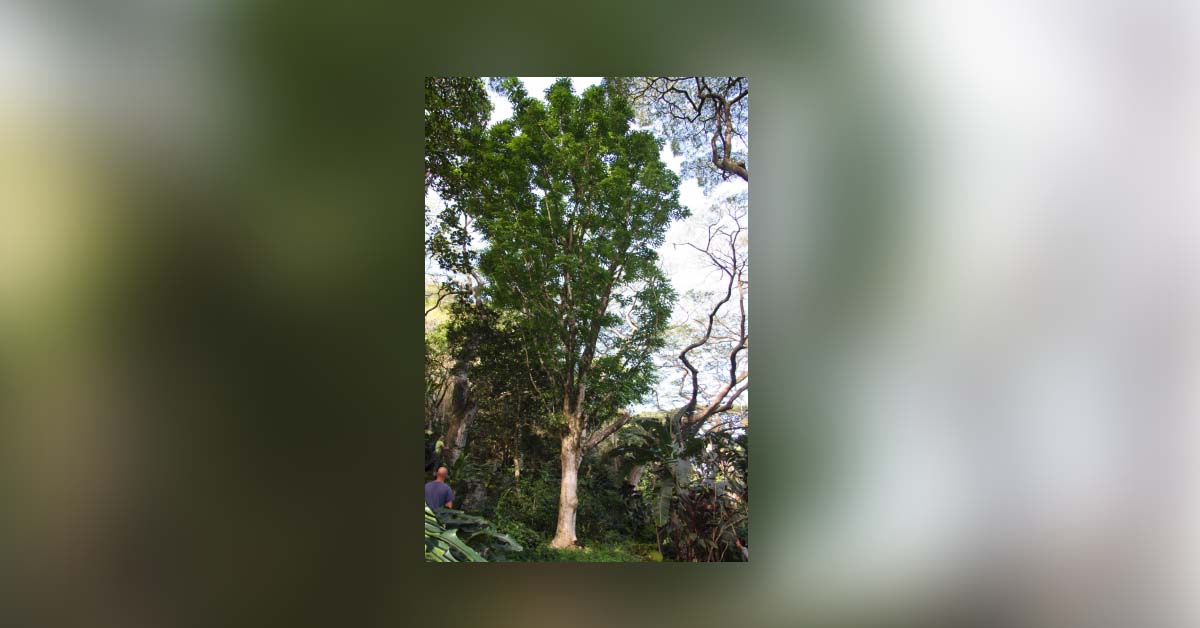Have you ever found yourself walking or hiking around here in Hawai`i nei and said to yourself (because we all talk to ourselves, especially when hiking), “That has to be the biggest koa or wili wili or hala tree I have ever seen!”? If so, you really may have found the biggest tree of its species. You are now officially a “Big Tree Hunter”. No license required. No Tree Hunter Education Class needed. What now? Now, you need to nominate that tree so it can be verified as a Big Tree Champion. The State of Hawai`i Division of Forestry and Wildlife (DOFAW) is who to contact at the link below. There is a nomination form that is easy to fill out. Just fill it out to the best of your ability and leave parts blank if you don’t know how to answer. Take a picture of the tree with someone standing at the base (for size reference) to submit with the form. http://dlnr.hawaii.gov/forestry/info/big-tree/
The program is meant to educate people about our native and culturally significant tree species, some of which cannot be found anywhere else in the world! So far, DOFAW is receiving nominations from a variety of individuals, from foresters to entomologists, to Big Tree Hunters like yourself. Tree-huggers, nature lovers, and people of all backgrounds are encouraged to get involved. You don’t have to be an arborist or work in a nursery to nominate a tree. Even if you don’t know what kind of tree it is for sure, you could always research it and try to find out. This program can help people learn more about the environment around them so that when they are out on a hiking trail, or even just walking around town, they can connect with the life around them. Instead of walking past a “tree”, you walk past an Ili`ahi or Halapepe tree, and you think about how amazing it is that this species evolved in Hawai‘i, and Hawai‘i only. Or you look at the hala tree and think about how cute it is that Hawaiian children used to use parts of it for love spells, and how amazing it is that early Hawaiians made so much use of something that can be so overlooked in today’s world. Learning about our unique trees develops one’s sense of place and appreciation for where we live.
What DOFAW staff would like to see for the Big Tree Program is of course, more nominations for new Champions and to ultimately find the biggest of the big trees. They also would like to hear people’s stories. Does the tree have a special meaning to you? Has the tree been standing for a long time? Has it seen something interesting in history? Was it your grandma’s favorite kind of tree? Whatever your story is, or whatever the tree’s story is, they want to archive it.
Recently at Waimea Valley, we received the Big Tree award for the 2018 Champion Ohe Makai, Polyscias sandwicensis. It stands a staggering 68 feet tall and can be easily seen in our Upper Meadow, just makai of our Hawaiian Game Site. Beatrice Krauss stated that, “Boys and girls, as well as men in old Hawai‘i nei, enjoyed walking on wooden stilts called kukuluae‘o, or simply ae‘o, named after the longlegged Hawaiian black-necked stilt (Himantopus mexicanus knudsenii). The wood they choose for this game was Ohe Makai. According to Reverend Ka‘aiakamanu and Mr. Medeiros, “The fruits were used medicinally for babies. The mother would eat the fruits and feed her baby through breast milk to cure pao‘ao (childhood disease, with physical weaknesses) and ‘ea (thrush) with no side effects.”
Since becoming a Big Tree Hunter myself, I already know of other trees I want to nominate as Champions for their species. Now, it’s your turn to find that next Big Tree Champion!!



